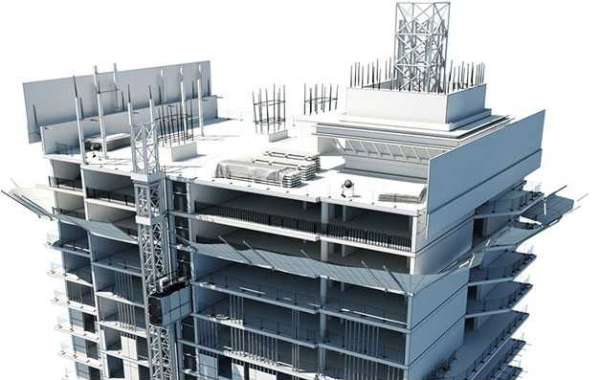Understanding Building Information Modeling (BIM):
What is BIM?
Building Information Modeling, commonly known as BIM, is a digital representation of the physical and functional characteristics of a building or infrastructure. Unlike traditional 2D drawings, BIM creates a virtual model that integrates geometry, spatial relationships, geographic information, and other relevant data. This 3D model becomes a shared knowledge resource that aids in decision-making throughout the entire lifecycle of a project.
How Does BIM Work?
BIM involves the creation of a collaborative digital model that contains both graphical and non-graphical information. This information-rich model allows architects, engineers, contractors, and other stakeholders to visualize the project comprehensively. From architectural design to construction sequencing and facility management, BIM covers every phase of the project.
In the realm of modern construction, technology has emerged as a driving force for innovation and efficiency. One of the most transformative technologies in this regard is Building Information Modeling (BIM). BIM is not merely a tool; it's a paradigm shift that has revolutionized how construction projects are conceptualized, designed, and executed. In this article, we will delve into the world of Building Information Modeling, exploring its significance, benefits, and the role of BIM services Company in shaping the future of the construction industry.
The Significance of BIM in Construction:
Enhancing Collaboration and Communication:
BIM fosters collaboration by offering a platform where all project stakeholders can contribute their expertise. With real-time updates and a centralized repository of information, miscommunication and errors are significantly reduced. This leads to faster decision-making and improved project outcomes.
Streamlining Design and Analysis:
Through BIM, architects and engineers can simulate various design scenarios, analyzing factors such as structural integrity, energy efficiency, and spatial optimization. This iterative process results in more informed design choices and a reduction in costly design errors during construction.
Efficient Construction and Project Management:
BIM allows for precise scheduling and sequencing of construction activities. This minimizes clashes, optimizes resource allocation, and ensures that the project stays on track and within budget. It also enables better visualization of the construction process, enhancing overall project management.
The Role of BIM Services Companies:
What Are BIM Services Companies?
BIM services companies are specialized firms that provide expertise in creating, managing, and utilizing BIM models. These companies employ skilled professionals who are well-versed in the intricacies of BIM software and processes.
Services Offered by BIM Companies:
BIM services companies offer a range of services, including:
BIM Modeling: Creating accurate 3D models of buildings and structures.
Clash Detection: Identifying clashes between different building elements to prevent conflicts during construction.
Quantity Takeoff: Extracting accurate quantities of materials for cost estimation.
Facility Management: Developing BIM models for efficient facility operation and maintenance.
The Future of Construction with BIM:
Advancements in Technology:
As technology continues to evolve, so does BIM. The integration of artificial intelligence, machine learning, and IoT in BIM processes will further enhance project outcomes. Predictive analysis and real-time data tracking will become integral to construction projects.
Sustainable Construction:
BIM plays a pivotal role in sustainable construction. By analyzing energy consumption, material use, and environmental impact, BIM enables the creation of eco-friendly buildings that adhere to green standards.
Global Adoption:
The global construction industry is increasingly recognizing the value of BIM. Governments and organizations worldwide are mandating the use of BIM in projects due to its efficiency, cost-effectiveness, and long-term benefits.
Conclusion:
In a world driven by innovation, Building Information Modeling stands as a testament to the transformative power of technology in construction. From streamlined collaboration to efficient project management, BIM has reshaped the industry's landscape. As BIM services companies continue to push boundaries and harness emerging technologies, the future of construction looks promising, sustainable, and technologically advanced.








